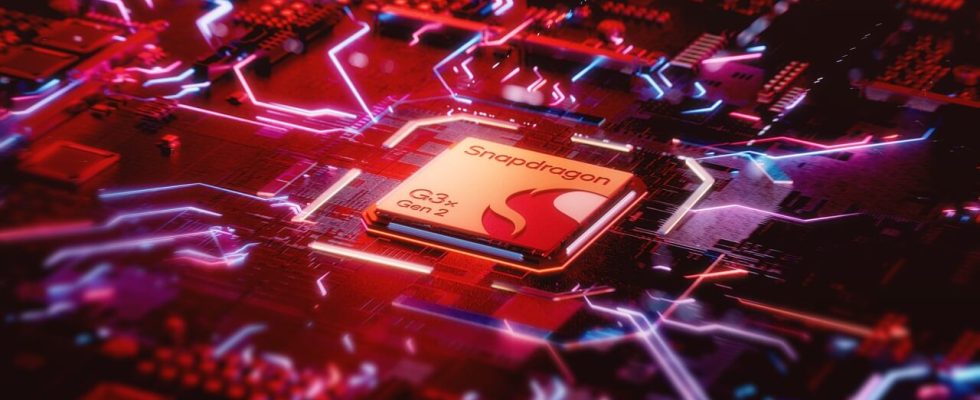Of today smart phone Two important mobile chipsets in the world, Google’s Tensor series and Qualcomm’s Snapdragon 8 SoC, best Android flagship devices It powers many. While Google’s Tensor series attracts attention, Qualcomm is also taking important steps in this field. With the recent release of Snapdragon 8 Gen 3, Qualcomm continues to push the boundaries. Let’s take a look at the key details of Qualcomm’s latest launch.
What is Snapdragon 8 Gen 3?
Snapdragon 8 Gen 3 is Qualcomm’s latest flagship mobile chipset, following the Snapdragon 8 Gen 2, which was a popular choice for high-end Android devices. While Google’s Pixel series uses in-house Tensor SoCs manufactured by Samsung, the vast majority of Android OEMs rely on Qualcomm’s technology. Qualcomm’s presence in the Android ecosystem continues to be strong, and this new chipset is expected to continue this dominance.
Highlights of Snapdragon 8 Gen 3:
1. Architecture: Snapdragon 8 Gen 3 has a Kyro CPU with seven CPU cores. While that’s two cores fewer than the nine found in the Tensor G3, Qualcomm is leveraging a 3.3GHz Cortex-X4 for the primary core, which is a generation ahead of Google’s Tensor SoCs. This setup is complemented by five performance Cortex-A720 cores, three of which run at 3.2GHz and two at 3.0GHz, offering promising performance.
2. Game Skill: Qualcomm emphasizes the gaming capabilities with this chipset and touts it as a “console challenger”. The Adreno GPU in Snapdragon 8 Gen 3 improves both performance and efficiency, with a 25% increase compared to its predecessor. The chipset supports hardware-accelerated ray tracing, offers a 240Hz output option for compatible displays, and is compatible with Unreal Engine 5’s advanced Lumen lighting technology.
3. Focus on Artificial Intelligence: As artificial intelligence comes to the fore, Qualcomm is preparing to compete head-to-head with Google in this field. Snapdragon 8 Gen 3 places a significant emphasis on artificial intelligence capabilities. There’s a lot to look forward to in terms of AI functionality, with tools like on-device stable diffusion for fast rendering, Video Object Eraser for video editing, and advanced personalization via the Sensing Hub, which uses phone sensors to track fitness, activities, and location.
4. Migrating to 64-bit Applications: In particular, Qualcomm’s move to exclusively support 64-bit applications means that older software may no longer be compatible with modern flagship phones. This transition has been expected for a while and Qualcomm sees it as the right move.
| Snapdragon 8 Gen 3 | Snapdragon 8 Gen 2 | Snapdragon 8 Gen 1 | |
|---|---|---|---|
| nuclei | 1 Cortex-X4 @ 3.3GHz 3 Cortex-A720 @ 3.2GHz 2 Cortex-A720 @ 3.0GHz) 2 Cortex-A520 @ 2.3GHz | 1 Cortex-X3 @ 3.2GHz 2 Cortex-A715 @ 2.8GHz 2 Cortex-A710 @2.8GHz | 1 Cortex-X2 @ 3GHz 3 Cortex A-710 @2.5GHz 4 Cortex A-510 @ 1.8GHz |
| GPU | Adreno | Adreno 740 | Adreno 730 |
| Production Architecture | 4nm TSMC | 4nm TSMC | 4nm Samsung |
| Modem | Snapdragon X75 5G | Snapdragon X70 5G | Snapdragon X65 5G |
| Storage | UFS 4.0 | UFS 4.0 | UFS 3.1 |
| Memory | LPDDR5x up to 4800 MHz | LPDDR5x up to 4200MHz | LPDDR5x up to 3200MHz |
| Wi-Fi support | WiFi 7 | WiFi 7 | Wi-Fi 6e |
| bluetooth | Bluetooth 5.4 | Bluetooth 5.3 | Bluetooth 5.2 |
| Media Decoding | H.265, VP9, AV1 | H.265, VP9 | H.265, VP9 |
Devices Powered by Snapdragon 8 Gen 3:
While Snapdragon 8 Gen 3 is now official, specific device details remain limited. Xiaomi’s 14 series is the only device confirmed to work with Qualcomm’s hardware so far. However, Qualcomm has listed several other hardware partners that will adopt this chipset in their upcoming devices. These partners include ASUS, Honor, iQOO, Meizu, Nio, Nubia, OnePlus, Oppo, Realme, Redmi, RedMagic, Sony, Vivo, Xiaomi and ZTE.
Important Exceptions:
One notable omission from this list is Google’s Pixel series, which currently uses Tensor SoCs. Google is expected to continue using its in-house chips for future Pixel devices. However, Google and Qualcomm maintain a working relationship, with Qualcomm’s Snapdragon W5 chip powering the Pixel Watch 2.
As for Samsung, although not mentioned initially, the Snapdragon 8 Gen 3 could find its way into the Samsung Galaxy S24 lineup, despite Samsung’s tendency to skip Qualcomm’s initial press releases. Samsung could opt for the Exynos chip for international models and make a potential comeback in the Galaxy S24 series while keeping Snapdragon for US models.
As a result, Snapdragon 8 Gen 3 will have a significant impact on the Android smartphone market next year. Its powerful architecture, gaming capabilities, AI focus, and move to 64-bit applications make it a notable addition to Qualcomm’s lineup and promises a compelling smartphone experience for users. With Qualcomm gearing up for a hardware launch in the near future, we will soon have the opportunity to witness the performance of this chipset firsthand.
